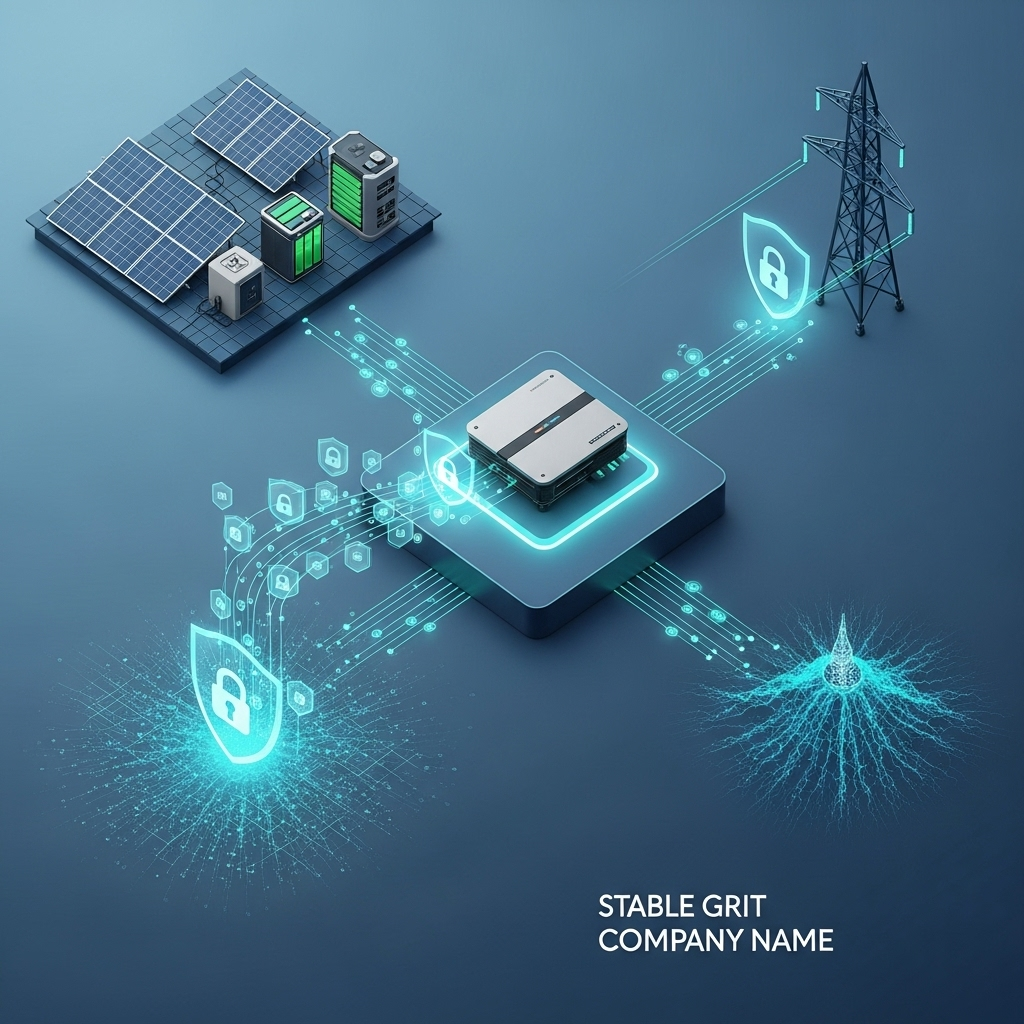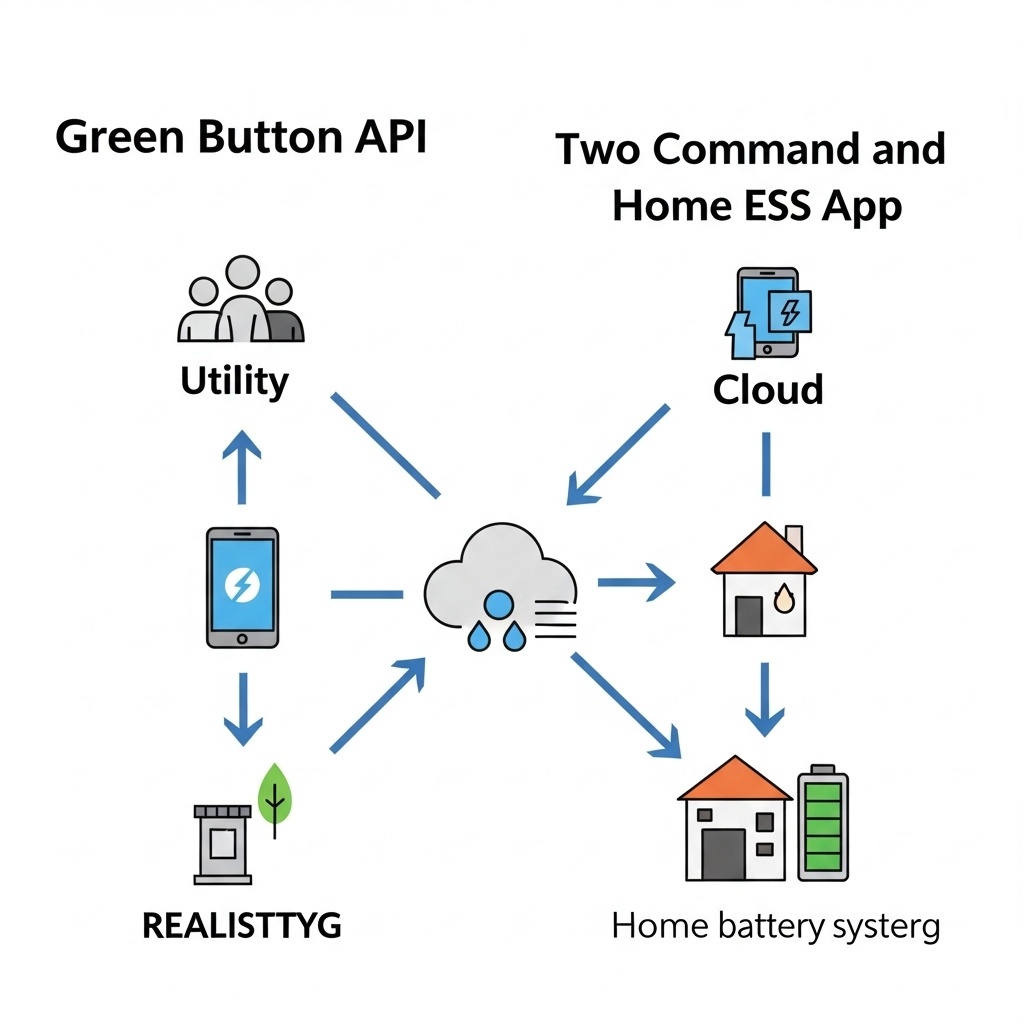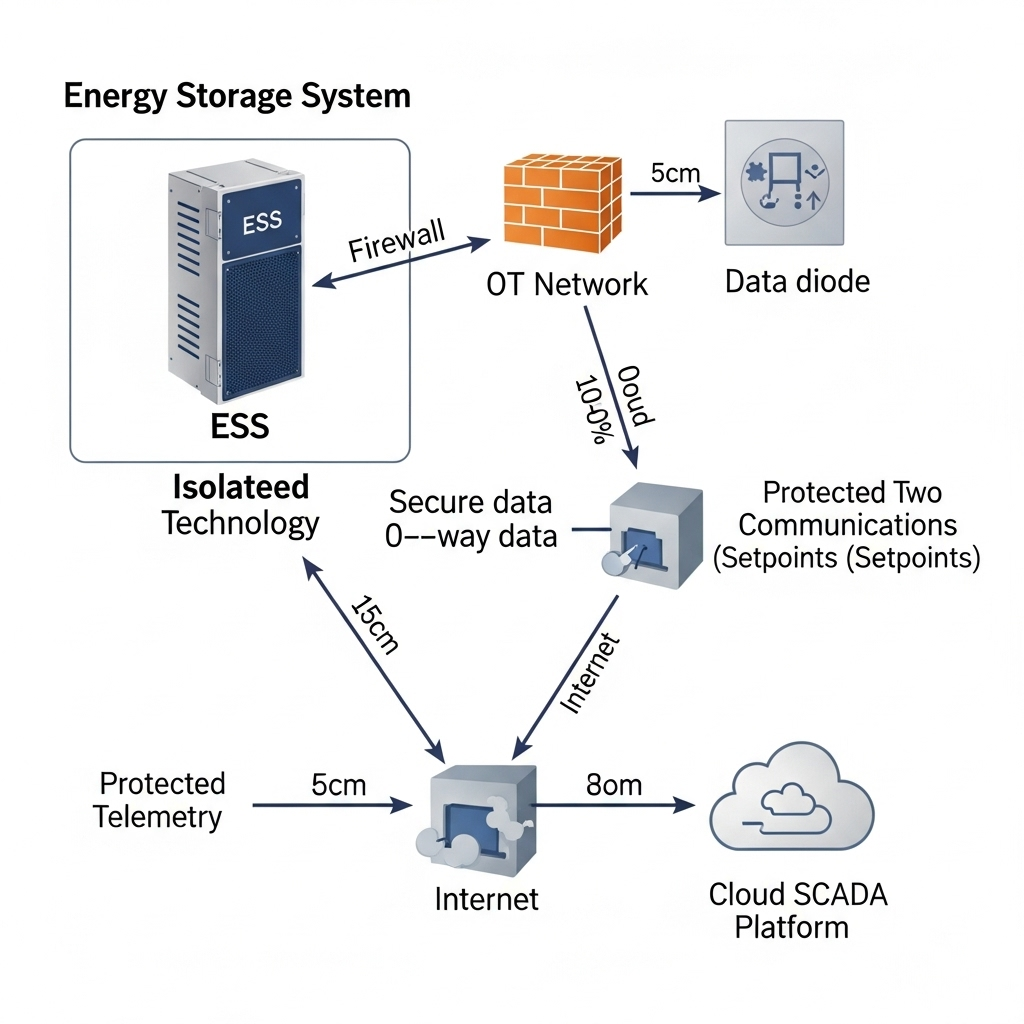As solar panels and energy storage systems (ESS) become integral parts of our power infrastructure, the way they communicate is under intense scrutiny. It is no longer enough for an inverter to simply convert DC to AC power. Today, grid operators require these devices to be active, responsive participants in the grid. This new role brings a critical challenge: ensuring the communication channels are secure. Grid codes, the technical rulebooks for connecting to the power grid, are rapidly evolving to include strict cybersecurity requirements for inverter and ESS communications.
The Evolution of Grid Codes for Inverter-Based Resources
The rules governing how renewable energy systems connect to the grid have changed dramatically. What started as simple interconnection guidelines has transformed into a complex framework demanding active participation and robust security.
From Passive Generation to Active Grid Support
Early solar installations were treated as passive generators. They produced power when the sun was shining and that was it. Modern power systems, however, rely on inverter-based resources (IBRs) like solar and battery storage to provide essential grid services. These services include voltage and frequency regulation, which help maintain grid stability. This requires constant, two-way communication between the inverter and the grid operator, making the security of that communication link a top priority.
Cybersecurity as a Foundational Requirement
With millions of distributed energy resources (DERs) connecting to the grid, the potential surface for cyberattacks has expanded exponentially. A coordinated attack on insecure inverters could destabilize sections of the grid. Recognizing this, regulators are embedding cybersecurity directly into grid codes. A report from the International Renewable Energy Agency, Grid Codes for Renewable Powered Systems, highlights that cybersecurity is already one of the most critical factors for the security of electricity supply and will only grow in importance. This shift makes secure communication a non-negotiable aspect of grid compliance.
Global Push for Communication Standards
Different regions are formalizing their security expectations. In China, for example, DERs must meet specific communication protocol standards like DL/T 634.5.104, which is based on the international IEC 60870-5-104. These standards define how devices should communicate securely with system operators. Similarly, Europe is developing a network code on cybersecurity. The goal is to create a common language for secure energy communications, reducing vulnerabilities across the board.
Key Security Mandates in Modern Grid Codes
Modern grid codes are becoming more specific about the security measures required for inverters and energy storage systems. These mandates are built on established cybersecurity principles adapted for the unique challenges of the energy sector.
Strong Authentication and Authorization
The first line of defense is ensuring that only authorized devices and personnel can access or control an inverter. This means moving away from default, easily guessable passwords. The industry is adopting a 'zero trust' architecture. As explained in an initiative supported by the U.S. Department of Energy (DOE), a zero trust model assumes any connection attempt could be a threat and requires strict verification every time. This approach prevents unauthorized access even if an attacker gains a foothold in the local network.
Encrypted Data in Transit
All data exchanged between the inverter, the cloud, and the utility must be protected from eavesdropping or tampering. Grid codes increasingly call for the use of strong encryption protocols like Transport Layer Security (TLS). This ensures that control commands, such as an instruction to curtail power, and telemetry data, such as system performance metrics, remain confidential and unaltered during transmission. This prevents attackers from issuing false commands or stealing sensitive operational data.
Secure Remote Management and Updates
The ability to remotely monitor, control, and update inverters is crucial for managing a modern grid. However, this capability is also a potential attack vector. According to IRENA, the software update function itself must be secured against unauthorized interference. Grid codes now demand secure Over-the-Air (OTA) update mechanisms. This involves using digital signatures to verify that a firmware update is from a legitimate source and has not been corrupted. It also requires a secure process on the inverter to apply the update safely.
Architectures and Protocols for Compliance
Achieving compliance with these new grid codes requires a combination of standardized protocols and a layered security architecture. This approach builds resilience and ensures interoperability between different components of the energy system.
Adopting Standardized and Secure Protocols
To facilitate secure and reliable communication, grid codes are promoting the use of standardized protocols. While older protocols are still in use, the trend is towards modern, IP-based protocols that have security built-in. This standardization helps ensure that devices from different manufacturers can communicate securely within a utility's control system, which is essential for creating large, coordinated systems like Virtual Power Plants (VPPs).
Implementing a Layered Defense Strategy
No single security measure is foolproof. That is why a layered defense, or 'defense-in-depth,' is critical. A successful DOE-backed project demonstrated a three-layer energy management system for microgrids. The first layer provided situational awareness, the second enabled cooperative operation between microgrids even if central control was lost, and the third used grid-forming inverters for autonomous grid restoration. This multi-layered approach ensures that if one security control fails, others are in place to mitigate the threat.
The Critical Role of Grid-Forming Inverters
Grid-forming inverters are a game-changer for grid resilience. They can create their own stable grid signal, enabling them to 'blackstart' a section of the grid after a complete outage. The IRENA report notes that VRE resources with grid-forming inverters are an important enabler for black-start plans. For this to work, the communication directing these inverters must be exceptionally secure and reliable, as they become the backbone of grid recovery efforts.
Practical Steps for System Owners and Integrators
Understanding these requirements is the first step. The next is implementing them correctly to ensure your system is both compliant and secure.
Selecting Compliant and Secure Equipment
When designing a new solar and storage system, prioritize inverters and ESS components that are explicitly designed to meet modern cybersecurity standards. Look for products that support encrypted communication protocols, offer robust user access controls, and have a clear process for secure firmware updates. Choosing future-proof hardware can save significant costs and headaches down the road.
System Configuration Best Practices
Proper configuration is just as important as the hardware itself. Always change default passwords, create unique user accounts with strong credentials, and disable any unused communication ports or services. Segmenting your network—keeping your energy system on a separate network from other home or business devices—can also limit the potential impact of a breach. Regular monitoring of system logs for unusual activity is another key practice.
| Practice | Insecure Approach | Secure Approach |
|---|---|---|
| Login Credentials | Using the factory-default username and password. | Creating unique, strong passwords for all user accounts. |
| Network Access | Connecting the inverter to an open, shared Wi-Fi network. | Using a dedicated, segmented network with a firewall. |
| Firmware Updates | Ignoring update notifications or disabling automatic updates. | Enabling automatic updates or applying them promptly from verified sources. |
| Remote Access | Leaving remote access ports open to the public internet. | Using a secure VPN or manufacturer-provided secure cloud connection. |
Maintaining Performance While Enhancing Security
Implementing security measures should not come at the expense of system performance. It is important to ensure that encryption and other security processes do not introduce latency that affects the inverter's ability to respond to grid commands. While setting up your secure system, you should continue to monitor its output and efficiency. You can use an ultimate reference for solar storage performance as a benchmark to confirm that your system's key performance indicators, like round-trip efficiency and depth of discharge, remain optimal after security hardening.
Building a Secure Energy Future
The integration of solar and storage into the power grid is accelerating, and with it, the need for unbreachable communication security. Grid codes are no longer just about electrical compliance; they are now a central part of our collective cybersecurity defense. For system owners, integrators, and manufacturers, adhering to these evolving security requirements is not just about following rules. It is about contributing to a more resilient, reliable, and secure energy infrastructure for everyone. Building systems with security in mind from day one is the only way to realize the full potential of distributed energy.
Frequently Asked Questions
What are grid codes?
Grid codes are a set of technical rules and requirements that power producers must meet to connect their systems to the electric grid. These rules ensure the safety, stability, and reliability of the overall power system. They cover aspects like voltage and frequency control, fault ride-through, and increasingly, cybersecurity.
Why is secure communication for inverters so important now?
Secure communication is vital because modern inverters are no longer just passive devices. They actively communicate with grid operators to help balance the grid. If these communication channels are compromised, attackers could potentially destabilize the grid by sending malicious commands to a large number of inverters simultaneously, causing widespread disruptions.
What is a 'zero trust' architecture in the context of ESS?
A zero trust architecture is a security model based on the principle of 'never trust, always verify.' In the context of an Energy Storage System (ESS), it means that no device or user is trusted by default, even if they are connected to the same local network. Every request to access or control the ESS must be strictly authenticated and authorized before being granted.
Can I secure my existing solar system?
Securing an existing system is possible, but the extent depends on the hardware's capabilities. You can take immediate steps like changing default passwords, updating firmware to the latest secure version, and isolating the system on your network. However, older inverters may not support modern encryption protocols, limiting the level of security you can achieve. Upgrading to newer, compliant hardware may be necessary for full protection.





Leave a comment
All comments are moderated before being published.
This site is protected by hCaptcha and the hCaptcha Privacy Policy and Terms of Service apply.